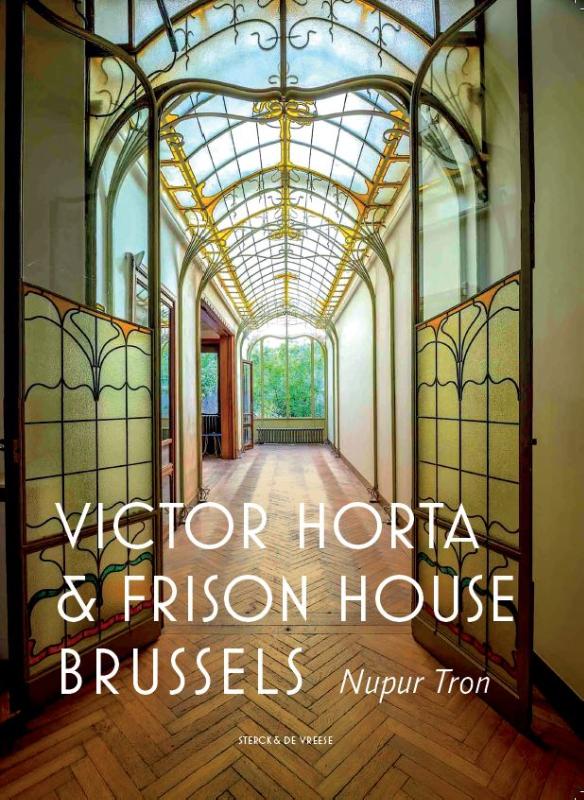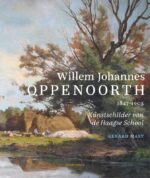Victor Horta and the Frison House in Brussels
€ 19,90
In the middle of the Lebeaustraat in Brussels, sandwiched between neo-Renaissance and neo-Gothic houses, stands an Art Nouveau jewel designed by Victor Horta: the Frison House. It was
commissioned by Maurice Frison, a lawyer and friend of the architect, and was built in 1894-1895. Horta designed not only the house, but also all its furniture and decoration, right down to the smallest detail: from door handles to marble fireplaces, from mosaic floors to elegant banisters, from wall lamps to the gratings for the cellar openings. The absolute eyecatcher is the winter garden, whose elegant design allows soft yellow light to flow subtly into its perfectly proportioned space.
Nupur Tron is the author of this book and owner of the house. In recent years, she has breathed new life back into Horta’s masterpiece. She pieced together bits of the old chandeliers she found in one of the cellars. She had items of furniture designed by Horta lovingly restored. With great passion, she continues to search for the funds that will allow her to restore the entire house to its former glory, one step at a time.
Horta and the Frison House in Brussels is an ode to the architect and his creation.
Nupur Tron is from India. She studied Design, Marketing & Merchandising and Fine Arts at the Fashion Institute of Technology in New York. She designs jewellery, in which the different styles of east and west meet in harmony.
Gerelateerde boeken
-
De nieuwe gids voor de niet-bestaande vogels van Europa
€ 19,90Na het verschijnen in 2013 van De Kleine Gids voor de niet-bestaande Vogels van Europa is kunstenaar en amateurornitholoog O.C. Hooymeijer onverdroten doorgegaan met het speuren naar niet-bestaande vogels. Veldreizen naar het uiterste noorden van Rusland, tot in het diepe zuiden van de mediterrane landen hebben geleid tot de ontdekking van bijna vijftig nieuwe specimen, alle zeer nauwkeurig beschreven en verbeeld.
Voor het onderzoek naar de bij de ontdekte vogels behorende ‘Volkswijsheden’ heeft de schrijver vele tandeloze, zeer bejaarde bewoners van veelal het platteland geïnterviewd, teneinde de vaak bijna in vergetelheid geraakte spreuken te kunnen behouden voor het nageslacht.
Voor de in deze nieuwe Gids opgenomen ´Recepten met niet-bestande vogels’ heeft O.C. Hooymeijer bovendien vele culinair specialisten geraadpleegd en tientallen archieven en bibliotheken verspreid over heel Europa bezocht. -
Zeven eeuwen Allersmaborg
€ 32,50Zeven eeuwen Allersmaborg
Annette van der Post en Henk Th. van VeenVerscholen tussen de bomen in het Reitdiepdal bij Ezinge ligt de historische borg Allersma. Een statig maar sober gebouw met een lange en rijke geschiedenis, die in dit boek voor het eerst wordt beschreven.
Zeven eeuwen Allersmaborg schetst de levens van voorname Ommelander families die er permanent woonden en van Groninger regenten die in stadpaleizen resideerden en Allersma koesterden als hun buitenverblijf. Veel markante eigenaars en bewoners vanaf de middeleeuwen tot de twintigste eeuw passeren de revue: jonkheren, notarissen, gepensioneerde boeren en kunstenaars.
In de tweede helft van de twintigste eeuw ontwikkelde Allersma zich tot een artistieke broedplek door de gastvrijheid van het kunstenaarsechtpaar Martin Tissing en Annie Vriezen. Nationaal en internationaal opererende kunstenaars laafden zich er aan de betoverende atmosfeer. -
Feest!
€ 14,90Is het een droom of is het echt? Jan Mankes is een bijzondere schilder, die het liefst dieren schildert. En als in een droom trekken al deze dieren – paard, kraai, haan, geit, putter uil en nog veel meer – in een gondelvaart aan hem voorbij. Op de boten speelt een vrolijk orkest, wat de optocht tot een waar festijn maakt. Maar was het nu echt of niet? Met Een muzikaal schilderij voor Jan Mankes leren kinderen op een speelse manier het geheel eigen oeuvre van Jan Mankes kennen.
-




